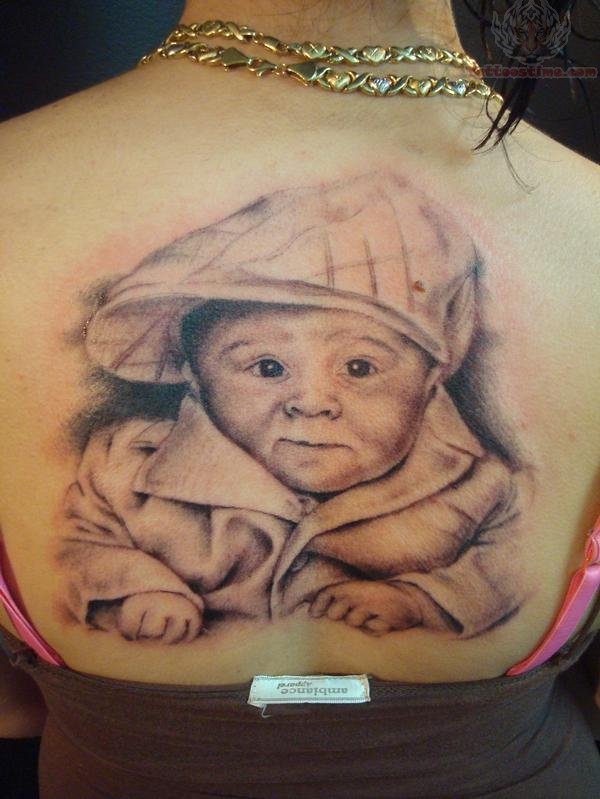Do you know about ink baby ? A tattoo is a kind of body modification, created by inserting ink, either momentary or indelible, in to the dermis covering of the skin to change the pigment.




The expressed word tattoo, or tattow in the 18th hundred years, is a loanword from the Polynesian word tatau, meaning "to create". The Oxford English Dictionary provides etymology of tattoo as "In 18th c. tattaow, tattow. From Polynesian (Samoan, Tahitian, Tongan, etc.) tatau. In Marquesan, tatu." Prior to the importation of the Polynesian word, the practice of tattooing had been referred to in the Western as painting, scarring, or staining.
Video related with ink baby
This isn't to be puzzled with the origins of the word for the military services drumbeat or performance -- see military tattoo. In this full case, the English term tattoo comes from the Dutch term taptoe (OED).
The first written mention of the word tattoo (or tatau), appears in the journal of Joseph Bankers (24 Feb 1743 - 19 June 1820), the naturalist aboard Captain Cook's ship the HMS Endeavour: "I will now mention the way they recognise themselves indelibly, each of them is so designated by their humour or disposition".
The word "tattoo" was brought to Europe by the explorer Adam Cook, when he came back in 1769 from his first voyage to Tahiti and New Zealand. In his narrative of the voyage, he refers to an operation called "tattaw".
Tattoo buffs might make reference to tattoos as "ink", "parts", "skin art", art" "tattoo, "tats", or "work"; to the designers as "tattoo artists", "tattooers", or "tattooists"; and also to places where they are "tattoo shops", "tattoo studios", or "tattoo parlors".
Mainstream art galleries keep exhibitions of both custom and classic tattoo designs such as Beyond Pores and skin, at the Museum of Croydon. Copyrighted tattoo designs that are sent and mass-produced to tattoo designers are known as "display", a notable illustration of professional design. Flash sheets are prominently shown in many tattoo parlors for the purpose of providing both motivation and ready-made tattoo images to customers.
The Japanese expression irezumi means "insertion of ink" and often means tats using tebori, the original Japanese side method, a Western-style machine, or for that matter, any method of tattooing using insertion of printer ink. The most frequent word used for traditional Japanese tattoo designs is Horimono. Japanese may use the word "tattoo" to mean non-Japanese styles of tattooing.
Related Images with with tattoo baby ink master moreover tattoo baby ink master also ink
Tatu Baby from Ink Master Tattoos amp; Tattoo Brainstorming Pinterest
alargador, baby boy, boy, cute, fashion, kid, piercing, style, tatoo
Baby footprint with ink BioEnable
Grey Ink Baby Tattoo On Girl Upper Back

Anthropologist Ling Roth in 1900 defined four ways of skin area marking and suggested they be differentiated under the names "tatu", "moko", "cicatrix", and "keloid".
Thank you for visiting this page ink baby.
Related : with tattoo baby ink master moreover tattoo baby ink master also ink
 Tatu baby and Babies on PinterestDo you know about tatu baby ? A tattoo is a kind of body modification, made by inserting ink, either momentary or indelible, in to the dermis level of your skin to chang ...
Tatu baby and Babies on PinterestDo you know about tatu baby ? A tattoo is a kind of body modification, made by inserting ink, either momentary or indelible, in to the dermis level of your skin to chang ...  ink master tatu baby In My Not So Humble OpinionDo you know about ink baby ? A tattoo is a kind of body modification, created by inserting ink, either temporary or indelible, into the dermis covering of your skin to c ...
ink master tatu baby In My Not So Humble OpinionDo you know about ink baby ? A tattoo is a kind of body modification, created by inserting ink, either temporary or indelible, into the dermis covering of your skin to c ... .jpg) Tattoo Quotes for Baby GirlsDo you know about baby girl tattoos ? A tattoo is a form of body modification, made by inserting ink, either indelible or temporary, into the dermis layer of your skin t ...
Tattoo Quotes for Baby GirlsDo you know about baby girl tattoos ? A tattoo is a form of body modification, made by inserting ink, either indelible or temporary, into the dermis layer of your skin t ...  Baby Angel Tattoos For Men Girl
Do you know about baby girl tattoos ? A tattoo is a kind of body modification, made by inserting ink, either indelible or temporary, in to the dermis level of your s ...
Baby Angel Tattoos For Men Girl
Do you know about baby girl tattoos ? A tattoo is a kind of body modification, made by inserting ink, either indelible or temporary, in to the dermis level of your s ...  Mother Child Tattoos on Thigh
Do you know about tattoos for children ? A tattoo is a kind of body modification, created by inserting ink, either momentary or indelible, in to the dermis layer of ...
Mother Child Tattoos on Thigh
Do you know about tattoos for children ? A tattoo is a kind of body modification, created by inserting ink, either momentary or indelible, in to the dermis layer of ...

.jpg)


0 comments:
Post a Comment